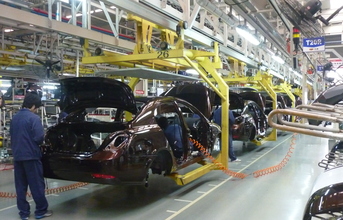
The automotive industry has been at the forefront of new automation technology adoption for decades. Beyond its broad adoption of industrial robots in the 1980s to its more recent integration of collaborative robots and use of additive manufacturing, manufacturers have also been applying various software technologies to optimise assembly operations, improve design and promote collaboration in the manufacturing process, according to a media report.
Now, the industry is turning towards the use of digital twin technology to simulate and verify sub-assembly designs before manufacturing. This is a critical advantage in a number of applications, ranging from reducing the weight of autonomous vehicles to the design of safety systems, the report said.
A good example of this can be seen in Siemens Digital Industries partnership with Arm, the well-known supplier of semiconductor products and device architectures. The two companies are initially focusing on the automotive industry to help automakers, integrators, and suppliers collaborate, design, and deliver their next-generation platforms. More specifically, the companies are focusing on developing platforms for active-safety, in-vehicle infotainment, digital cockpits, and self-driving vehicles, says the report.
Siemens' Pave360, introduced in May 2019 as part of the company's Xcelerator portfolio, is a digital twin software environment that can be used to model devices in an automobile ranging from sensors and integrated circuits (ICs) to vehicle dynamics and the environment within which a vehicle operates. The software uses Arm Automotive Enhanced products with functional safety support, enabling collaboration in the development and validation of differentiated safety enabled systems, ICs, and software applications in the context of the entire vehicle. This capability will help automakers and suppliers simulate and verify sub-system and system-on-chip designs to better understand how they perform within a vehicle design before the vehicle is built, added the report.



































